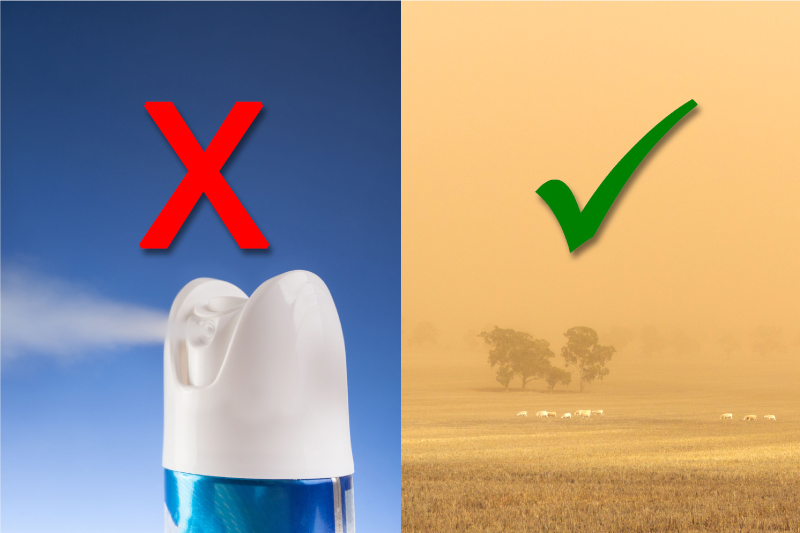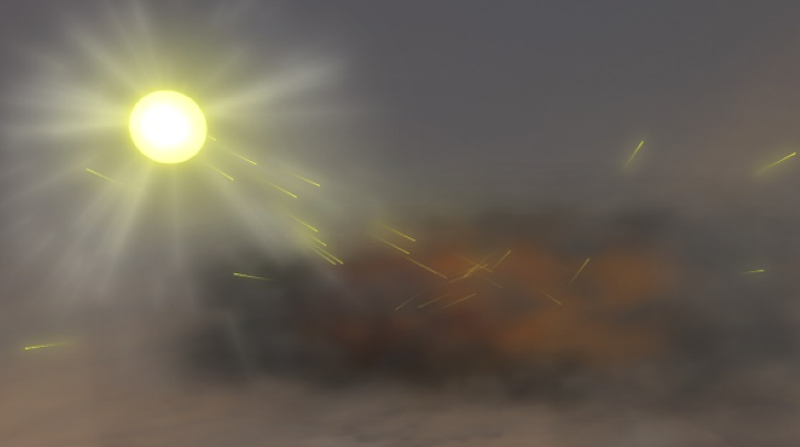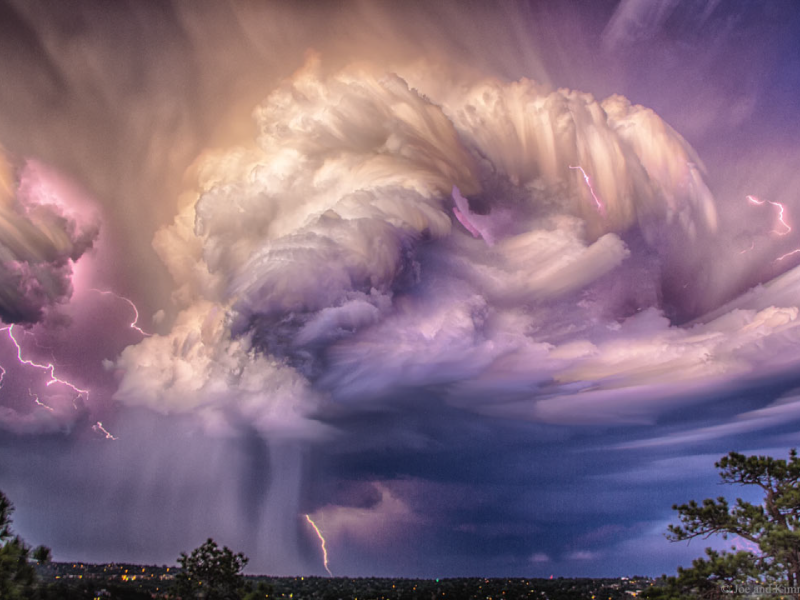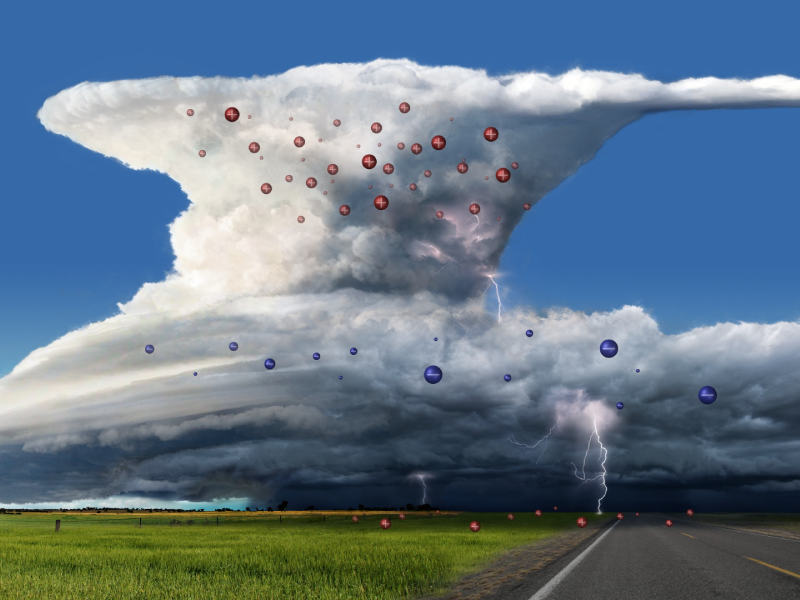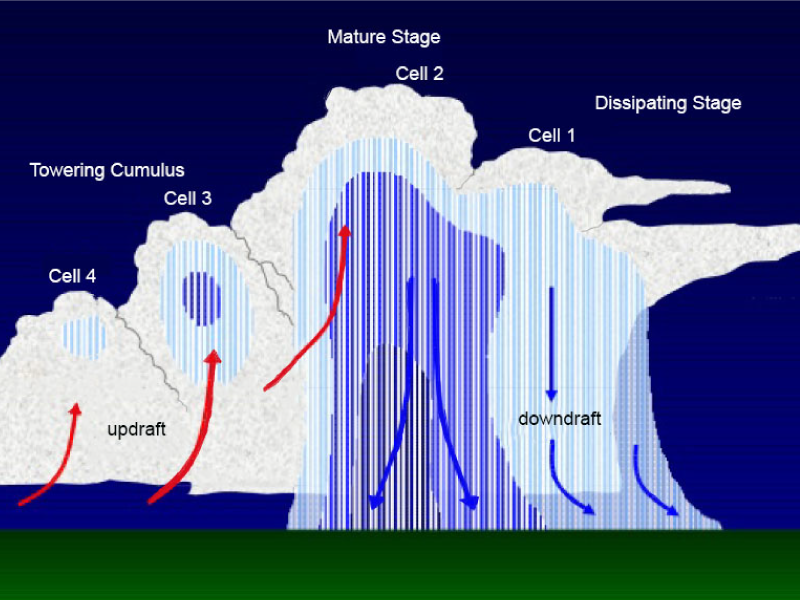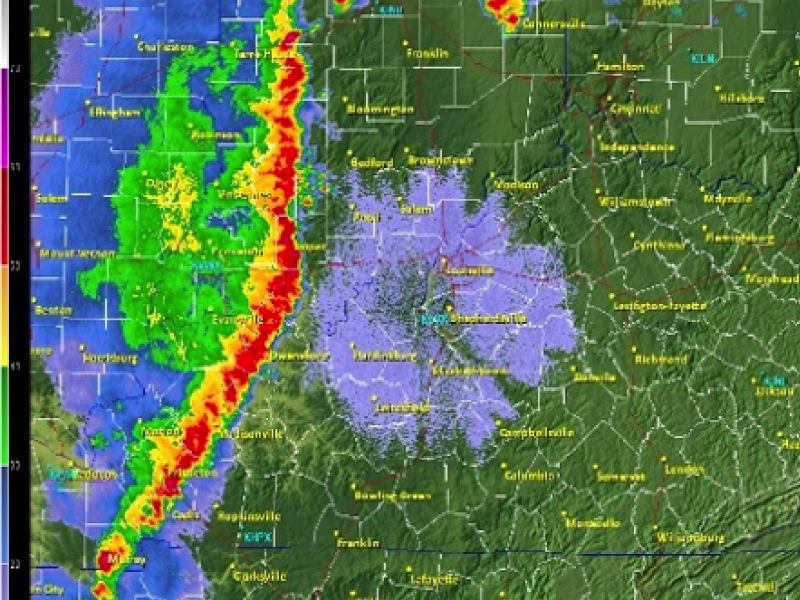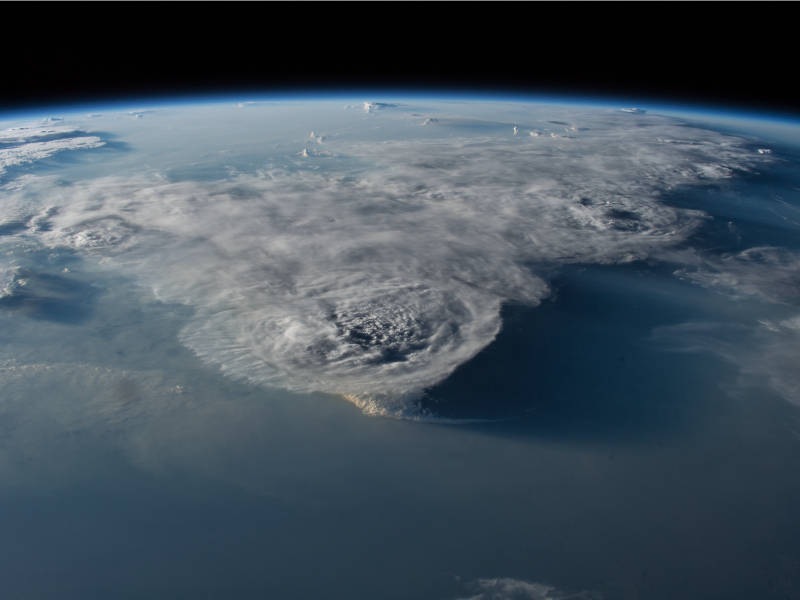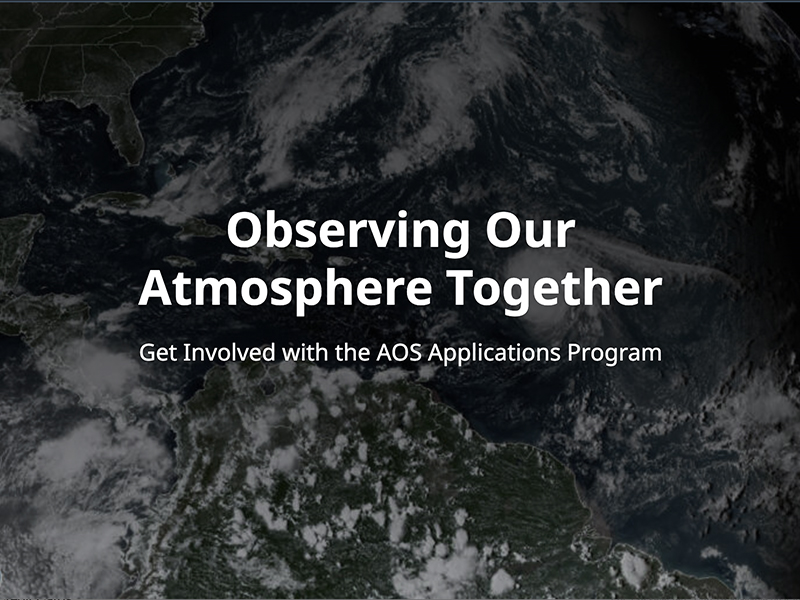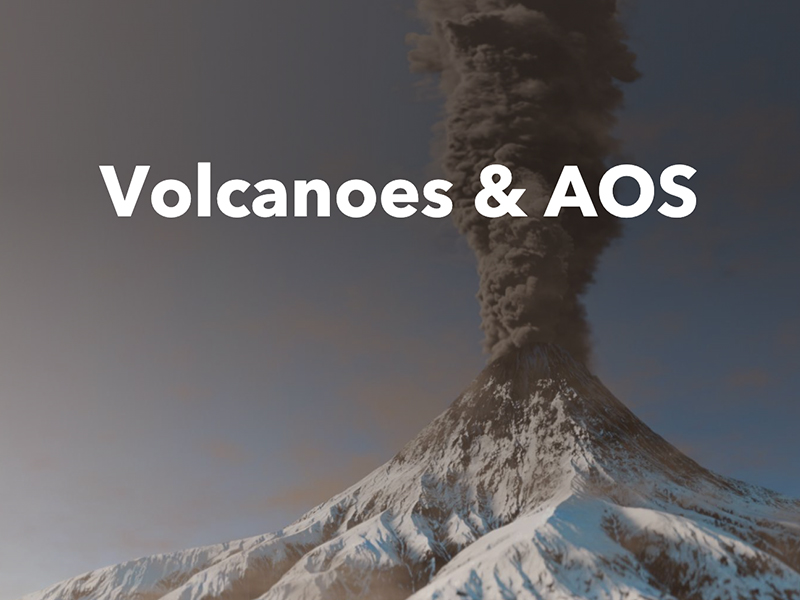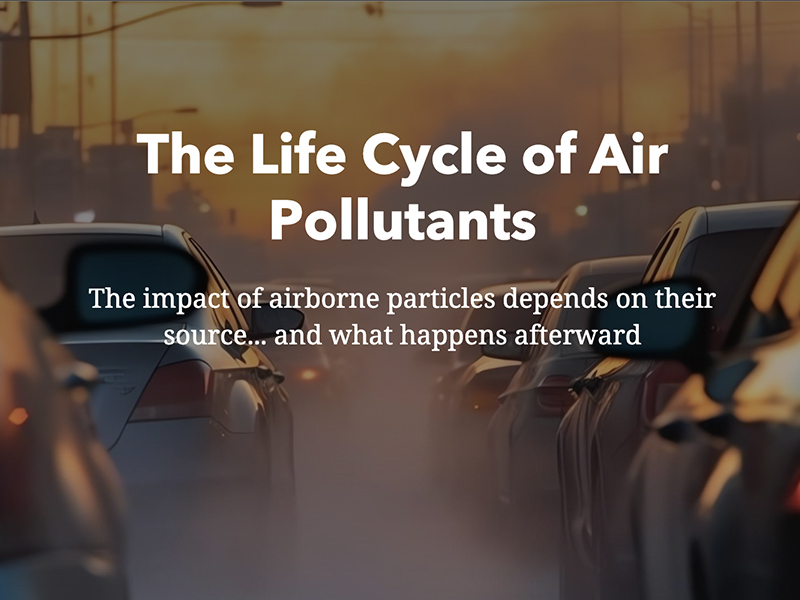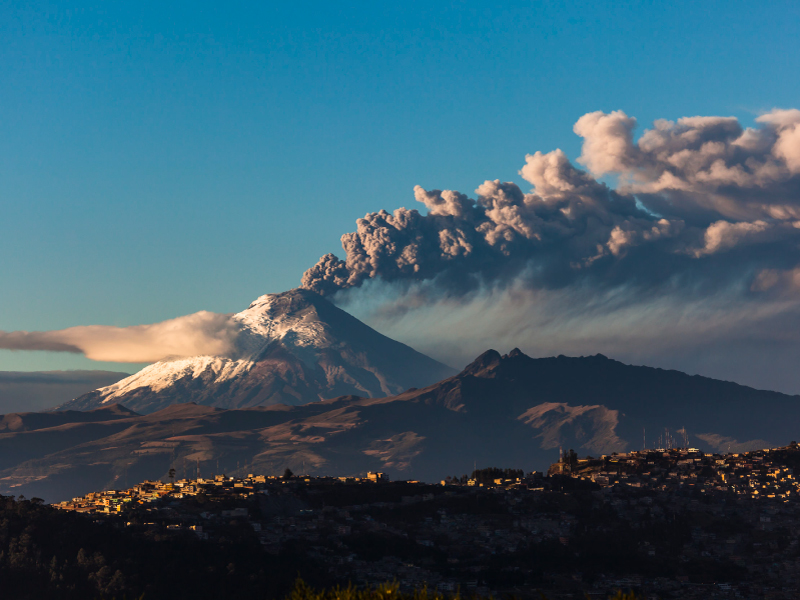Overview
When you look up into the sky, sometimes it's clear but very often it is hazy or cloudy. A clear sky, with its nearly invisible components, is in many ways simple to understand. However, the typical sky, with haze, clouds and precipitation, is far more complex. What is happening in these typical skies? The Atmosphere Observing System (AOS) will help to reveal the dynamic nature of the sky, resulting in better predictions of extreme weather and air quality and better long-term prediction of our changing climate. How will AOS achieve this?
Understanding the Dynamics of the Atmosphere and Storms
The atmosphere is in constant motion with global and regional-scale circulation. These circulation patterns can vary with season and result in different types of storms. AOS will contribute to improved understanding and prediction of severe weather events by monitoring air motion and precipitation processes in all types of clouds.
Convective clouds are vertically oriented clouds with significant rising and sinking air motions that can quickly contribute to precipitation. These clouds can produce a range of rain events from weak spring showers to intense local thunderstorms and organized systems like tropical cyclones. Yet there are many aspects of how convective storms work that we do not fully understand, for example, how in-cloud rising and sinking air motions affect clouds and precipitation.
AOS will provide the first-ever global view of vertical air motions and precipitation properties in convective storms. This will enable two key improvements: understanding of how intense precipitation forms and how these processes are represented in computer weather models. Such information may be critical to improved forecasts.
Understanding Aerosols and the Air We Breathe
Aerosols are tiny particles suspended in the atmosphere that have great importance for the quality of the air we breathe, as well as playing a role in cloud formation and evolution, affecting the warming and cooling of our planet.
AOS will provide valuable information on the processes that link aerosols to weather, climate and air quality with applications to human health, agriculture and ecosystems. AOS will help us answer fundamental questions about the sources of major human-made and natural aerosols and how they vary over location and time. The detailed aerosol measurements from AOS will allow us to better understand the near-surface concentrations of particulate matter that has a significant impact on the quality of the air we breathe.
By combining concurrent measurements of clouds, aerosols and precipitation AOS is uniquely positioned to answer fundamental questions on how aerosols, clouds and precipitation interact and affect the climate system. How is it done?
Investigating Clouds and Precipitation
As tiny suspended particles and water vapor get caught up in rising air motions, clouds form. Then as cloud droplets get large enough, they fall to the surface as precipitation. These are basic lessons we remember from school, so why would a NASA mission focus on processes we already know? The answer is what seems like simple processes are in reality are quite complicated. There is a great deal we cannot yet predict about cloud formation. What does it matter if the structure and behavior of a cloud changes? Turns out, there are major impacts.
Cloud formation involves a complex chain of processes by which precipitation occurs leading to a wide variety of cloud types that impact weather and climate in a multitude of ways. AOS will gather data at each step of cloud formation and evolution and give insights at processes that up to now have not been possible with existing space measurements. These measurements will improve our understanding of how clouds and the tiny suspended particles known as aerosols interact.
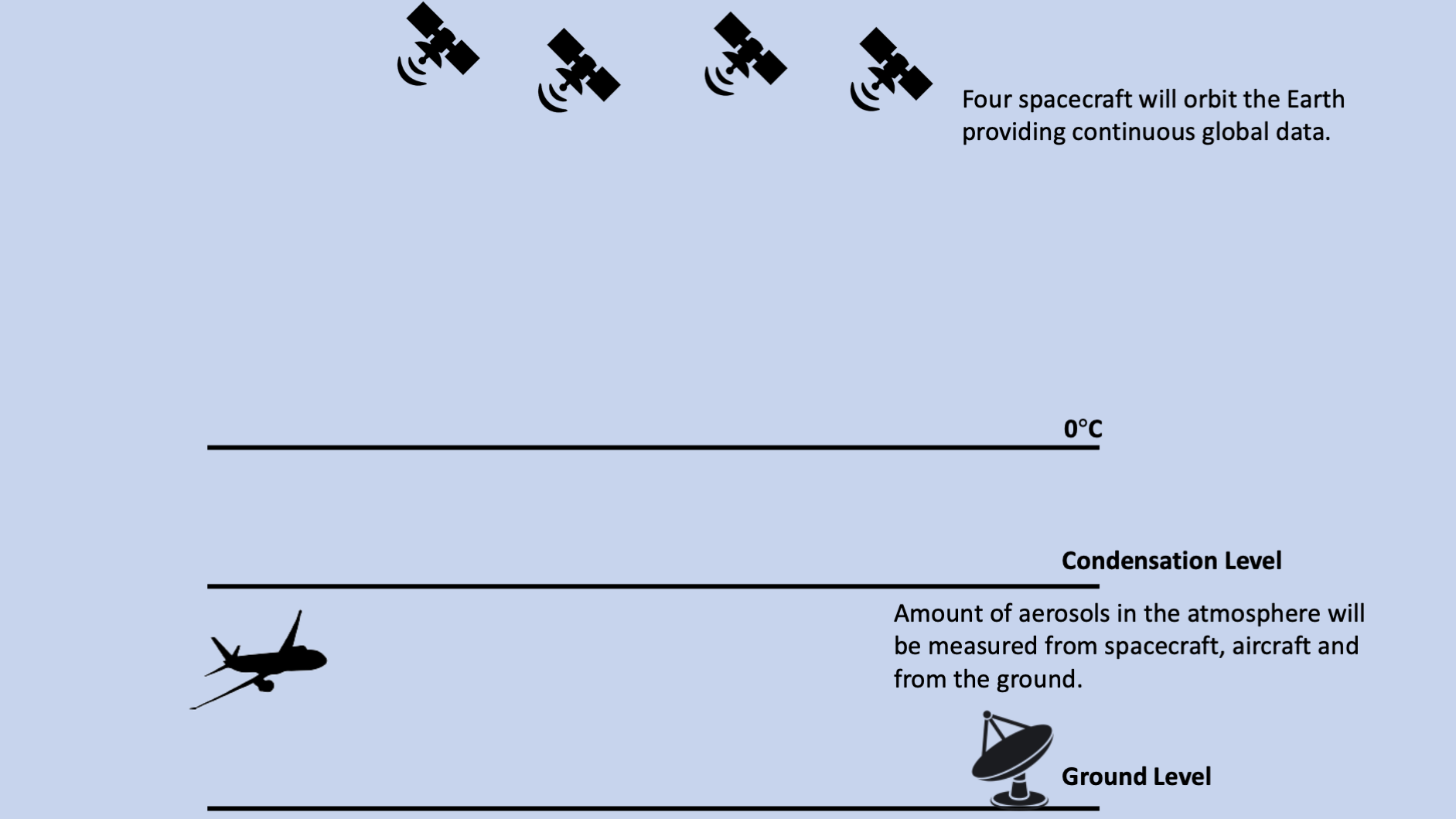 [1] AOS will provide measurements of cloud formation and precipitation from space, in the air, and from the ground. Aircraft, weather balloons and other platforms will collect data in the air.
[1] AOS will provide measurements of cloud formation and precipitation from space, in the air, and from the ground. Aircraft, weather balloons and other platforms will collect data in the air.
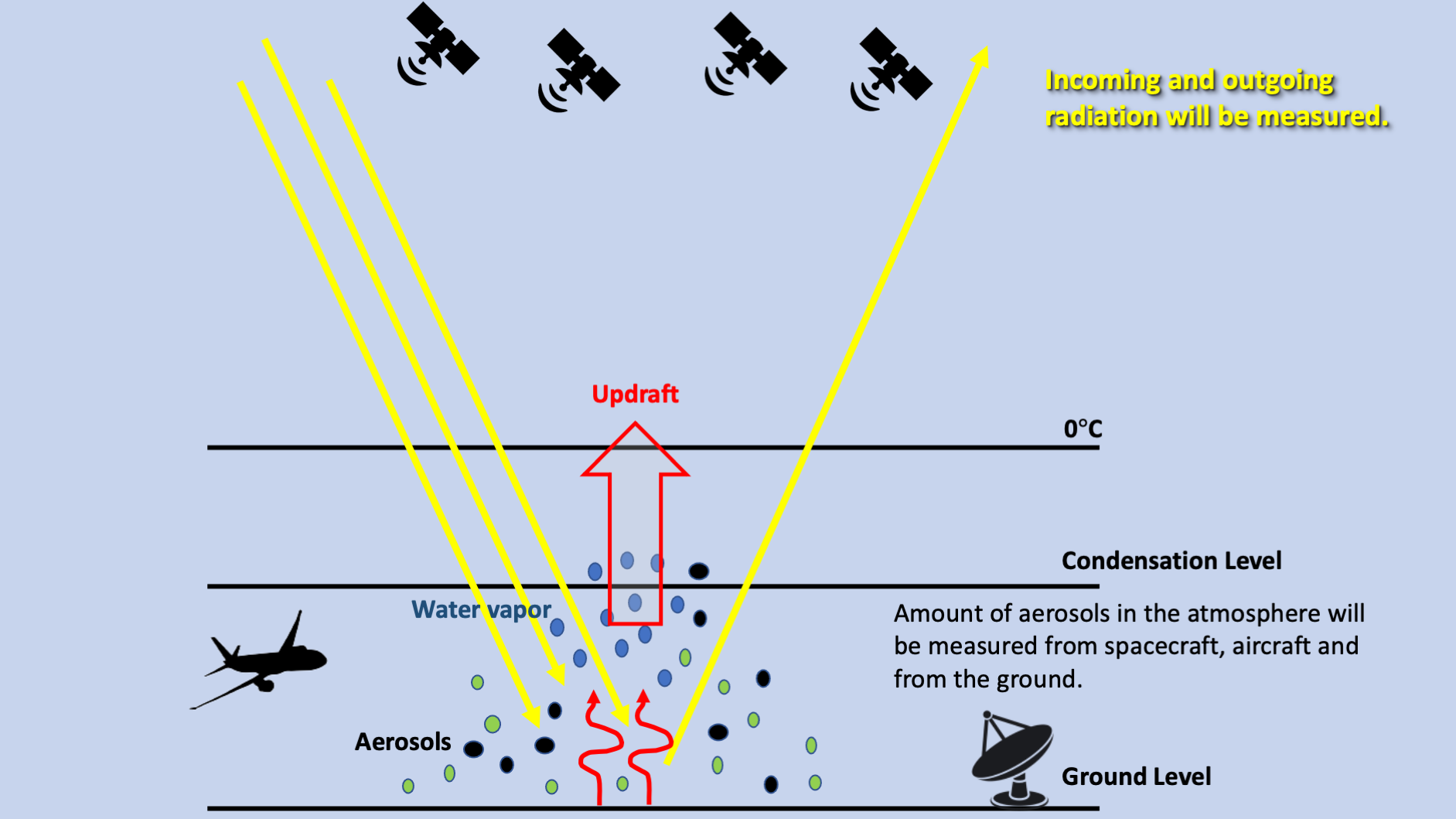 [2] Radiation from the sun heats up water and land surfaces. The warm air - updrafts - carry water vapor and aerosols higher in the atmosphere.
[2] Radiation from the sun heats up water and land surfaces. The warm air - updrafts - carry water vapor and aerosols higher in the atmosphere.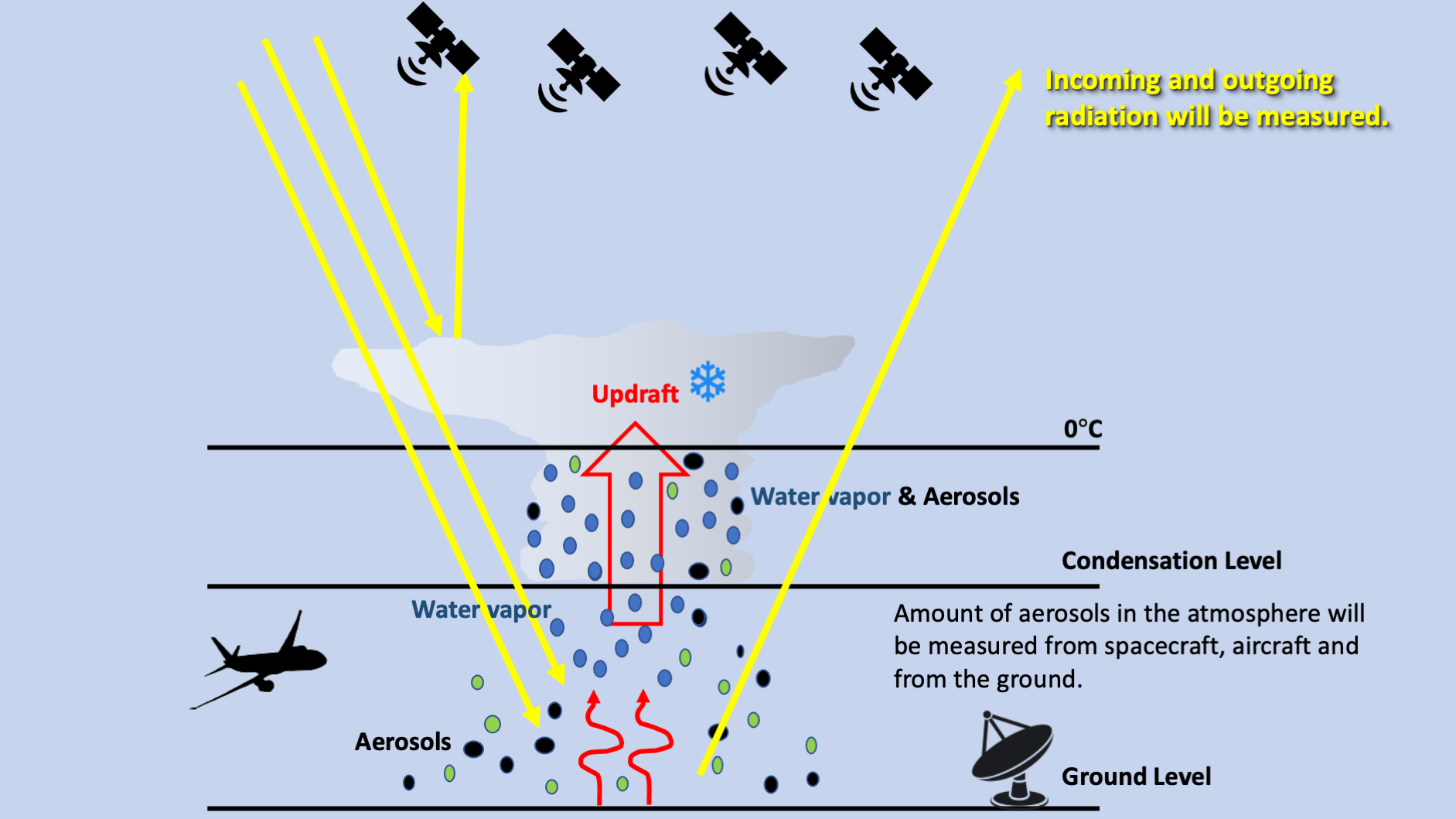 [3] As more water vapor and aerosols are lifted into the atmosphere. Clouds form and continue to grow.
[3] As more water vapor and aerosols are lifted into the atmosphere. Clouds form and continue to grow.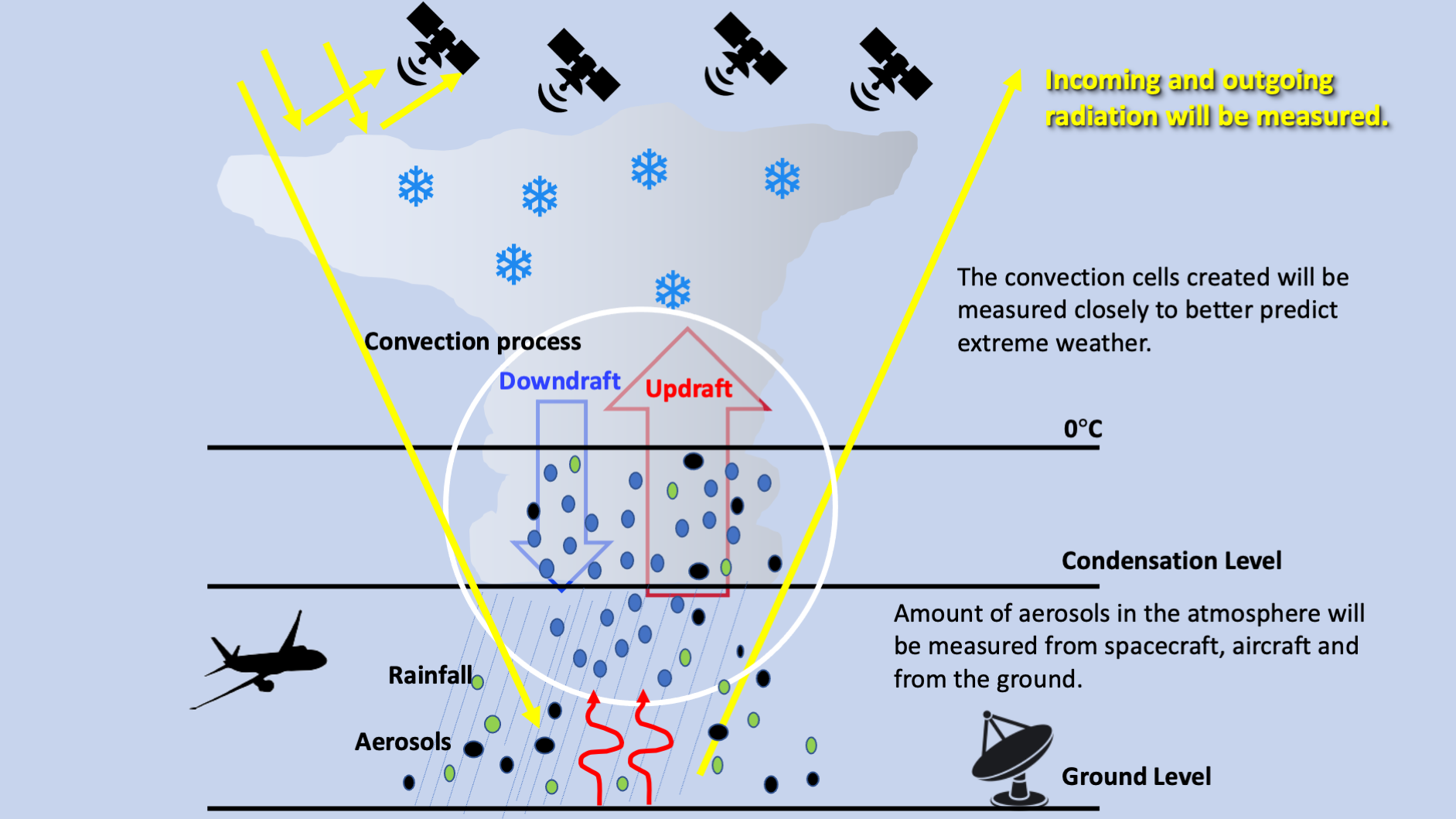 [4] As the updraft grows, it forces the cooler air from above down to the ground creating a downdraft. The transport of heat and moisture – convection – can produce thunderstorms of varying strength.
[4] As the updraft grows, it forces the cooler air from above down to the ground creating a downdraft. The transport of heat and moisture – convection – can produce thunderstorms of varying strength.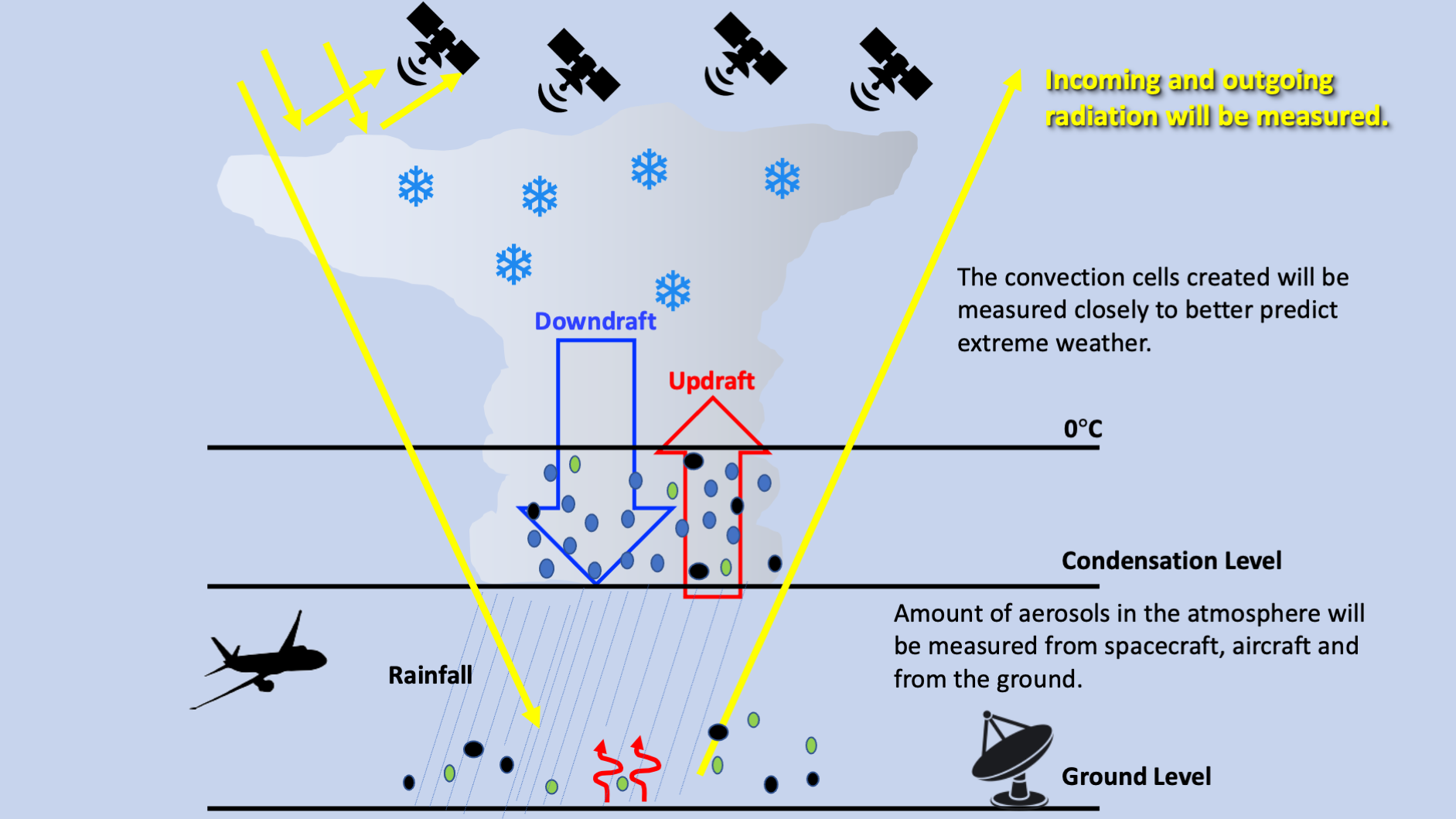 [5] AOS will gather data at each step of cloud formation. The behavior of the cloud can also change based on the amount and type of aerosols leading to more extreme weather.
[5] AOS will gather data at each step of cloud formation. The behavior of the cloud can also change based on the amount and type of aerosols leading to more extreme weather.
What's Up With Aerosols and Clouds?
Natural aerosols such as mineral dust from deserts and sea salt have always served as nuclei where water vapor condenses to form clouds.
Since the Industrial Revolution however, human-created sources of aerosols have made their way into the atmosphere. Why does this matter? Two reasons related to the total amount of aerosols and the type of aerosols in our atmosphere.
The number of aerosols in the air is one of the most important factors for cloud formation. Imagine there is a set amount of condensed water in the atmosphere. If there are fewer numbers of aerosols present, larger water drops form… allowing precipitation to form more easily.
When aerosols are present in very large numbers, as in polluted environments, that same amount of water gets spread over a greater number of drops. As a result, the drops may not get big enough to rain out and precipitation formation may be suppressed. Therefore, polluted air can lead to suppressed or decreased rainfall amounts in a given location, or even shifting precipitation patterns elsewhere.
Or, depending on aerosol type, the opposite can occur. High amounts of human-made aerosols in the atmosphere can also lead to heavier rainfall. Why? Because clouds with high levels of human-made aerosols can lead to delayed rainfall, making clouds grow larger, taller, and live longer. When they finally shed their water, the clouds can release their water through stronger storms.
Where Does the Energy to Drive All This Come From? Radiation.
Energy from the sun - solar radiation - heats up water and land surfaces. This heating of the surface leads to evaporation, creating water vapor. The rising warm air - updrafts - carry water vapor and aerosols higher in the atmosphere, cooling as it ascends, eventually forming cloud droplets. The type of aerosols within the clouds determines how the clouds subsequently evolve.
The types of aerosols are an important factor when it comes to radiation. Aerosol type can influence clouds by how they interact with solar energy. More reflective aerosols tend to help brighten clouds and make them last longer, resulting in a cooling of the atmosphere. Aerosols, like black carbon from fires, can absorb energy from the sun, warm the cloud environment, increase evaporation of cloud droplets and thereby shorten cloud lifetimes. When there are fewer clouds, less radiation is reflected, leading to further warming of the atmosphere.
How Will AOS Address These Issues?
The increasing number of aerosols in the atmosphere will continue to impact cloud formation and precipitation patterns around the world. AOS will provide improved and more frequent measurements of aerosols, clouds, and vertical air motion. AOS will target dynamic storm and cloud systems. These measurements - occurring over minutes to hours to days – will reveal the distribution of aerosols and their linkage to clouds and precipitation. These first-ever measurements are essential to understanding better the role of aerosols on cloud formation and larger impacts on weather, heavy rainfall, and extreme weather events.
Increased aerosols in the atmosphere also are a critical component of a changing climate. AOS will improve our understanding of how clouds and aerosols interact with each other to support decision making at timescales from hours to years to decades. AOS will provide the first-ever observations of how clouds and aerosols interact with radiation to address their major role in climate uncertainty.
How Will AOS Achieve This?
By using a combination of sensors on spacecraft, aircraft, balloons and ground stations AOS will continually observe aerosols, precipitation, clouds and the air-motion within clouds, providing a comprehensive view of how these systems work and interact with each other.
Why is AOS Important?
There is an urgent need for continuous measurements that enable scientists to better understand our dynamic and changing atmosphere. AOS will provide the first-ever measurements of aerosols, clouds, precipitation, vertical air motion and radiation that will greatly enhance understanding and forecasting of extreme weather events and long-term climate change.
AOS Science Questions
